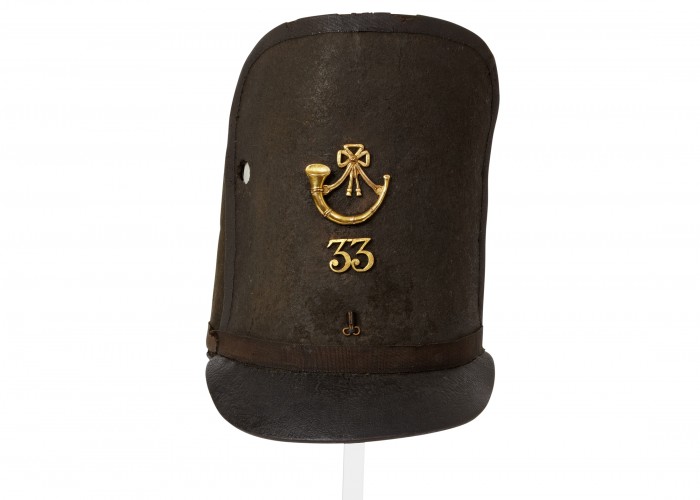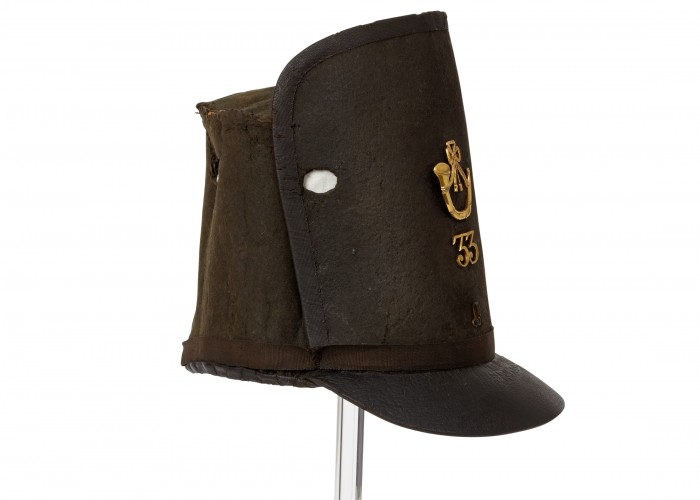Cap of Ensign James Howard

 Cap of Ensign Howard, holed at Waterloo. Copyright Duke of Wellington's Regimental Museum.
Cap of Ensign Howard, holed at Waterloo. Copyright Duke of Wellington's Regimental Museum.
 Cap of Ensign Howard, holed at Waterloo. Copyright Duke of Wellington's Regimental Museum.
Cap of Ensign Howard, holed at Waterloo. Copyright Duke of Wellington's Regimental Museum.
This is the uniform cap of Ensign James Howard, an officer in the 33rd Regiment of Foot.The hole comes from a French musket ball that was shot through the cap at the Battle of Waterloo. Astonishingly, the bullet missed Howard’s head entirely.
The 33rd Regiment of Foot was part of General Colin Halkett’s British Brigade at the centre of the Duke of Wellington’s army. It was against this position that French Marshal Ney, on the afternoon of 18 June, launched his cavalry attack.
Lieutenant Hope Pattinson of the 33rd wrote, “Our brigade was placed in the most trying position in which a soldier can find himself … resisting repeated charges from the French cavalry which we inevitably repulsed, we were yet exposed to the destructive fire of artillery which occasioned many casualties.”
The cavalry charges failed to break the British squares and Napoleon launched his elite Imperial Guard into the attack. Halkett concentrated his brigade and led them in the advance of the British infantry to meet them.
Pattinson wrote, “The contest soon became fierce and exterminating … It could not have lasted more than ten or fifteen minutes. Our brave general was shot right through both cheeks and removed from the field. Lieutenants Buck and Cameron were killed. Lieutenant Haigh, shot through the neck, died at the village of Waterloo next day. Adjutant Thain, Lieutenants Bain, Meikland Westmore and Ogle were also shot down. Captains M’Intyre and Hasty wounded besides between thirty and forty of our rank and file.”
Ensign James Howard was more fortunate. After the battle he found a musket ball hole in his cap. Writing home, “It must have been within the eighth of an inch of my head. I intend on bringing the cap to England.”
At this critical moment, while the infantry battle hung in the balance, Sir John Colborne seized the initiative. He turned his regiment, the 52nd Light Infantry, to strike the Imperial Guard in their vulnerable left flank. It broke their attack, leading to panic and then rout of the French Army.
-
Curatorial info
- Originating Museum: Duke of Wellington's Regiment Museum
- Material: Felt
-
Use this image
You can download and use the high resolution image for use in a non-profit environment such as a school or college, but please take note of the license type and rights holder information below
- Rights Holder: Copyright Duke of Wellington's Regiment Museum. Photography Relic Imaging Ltd.
- License Type: Creative Commons
Find it here
This object is in the collection of The Duke of Wellington’s Regimental Museum







